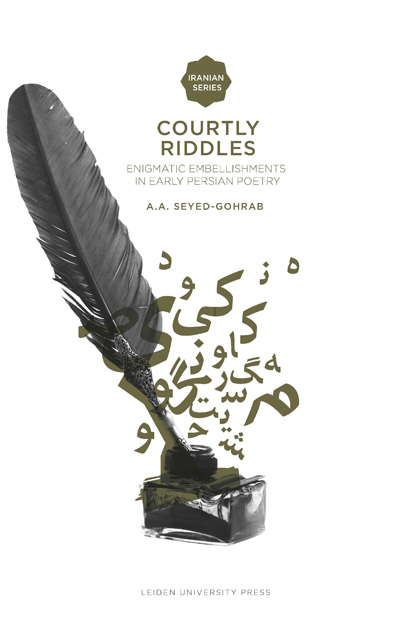Chapter Five - The Virtues of the King: Riddles in Mukhtārī’s Hunar-nāma
Published online by Cambridge University Press: 19 November 2022
Summary
‘UTHMĀN MUKHTĀRĪ GHAZNAVĪ
Abū ʿUmar ʿUthmān b. Umar Mukhtārī Ghaznavī was born around 467/1074-5 and died between 513 and 515/1118-21. Mukhtārī had several patrons at the courts of the Qarakhānids (Ilek-Khans), the Seljýqs of Kirman and the Ismāʿīlī ruler in Tabas. In Persian literary history, he is known for his detailed and extensive poetic descriptions (vaṣf) and his interest in literary riddles. His ability lies first of all in the minute description of courtly events such as royal banquets, hunting grounds, battlefields, and Islamic and pre-Islamic Persian festivals. He provides many meticulous descriptions of the objects and symbols of administrative and military power, such as a pen, a ring, a sword, a distinguished name, generosity, etc.
Mukhtārī placed six riddles in the opening sections of his odes. These riddles are on a pen (qalam, pp. 29f); a candle (shamʿ, pp. 105ff); a ring (angushtarī, pp. 146ff); a harp (chang, pp. 159ff); the throne and palanquin of the soaring court (mahd va marqad-i takht-i ravān, pp. 186ff); and a cloud (abr, pp. 467ff). In addition, he composed several descriptive poems (vaṣf) that look like riddles, and the editor of his Dīvān, Jalāl al-Dīn Humāʾī, has added the term riddle in titles or footnotes to facilitate reading. These poems have all the characteristics of a literary riddle, except that they do not begin with the phrase “what-is-it (…),” a conventional feature of Persian riddles.
A good example of Mukhtārī's descriptions of the symbols of the Persian court and the virtues of the king is a qaṣīda of 87 couplets dedicated to Khwāja Imād ad-Dīn Manṣūr ibn Saʿīd. Humāʾī has called this one of Mukhtārī's best works. In it, he depicts autumnal fruits, the pen, sword, horse and battlefield, all in a riddling fashion. Humāʾī considers these depictions to be riddles. But unlike the usual literary riddles, these descriptions do not occur in the nasīb but rather in the madīḥ (panegyric) section, in which the poet names the virtues and possessions of Khwāja Imād ad-Dīn. Mukhtārī's decision to call attention to these courtly attributes by describing them minutely is significant for the development of Persian poetic style.
- Type
- Chapter
- Information
- Courtly RiddlesEnigmatic Embellishments in Early Persian Poetry, pp. 145 - 199Publisher: Amsterdam University PressPrint publication year: 2010

